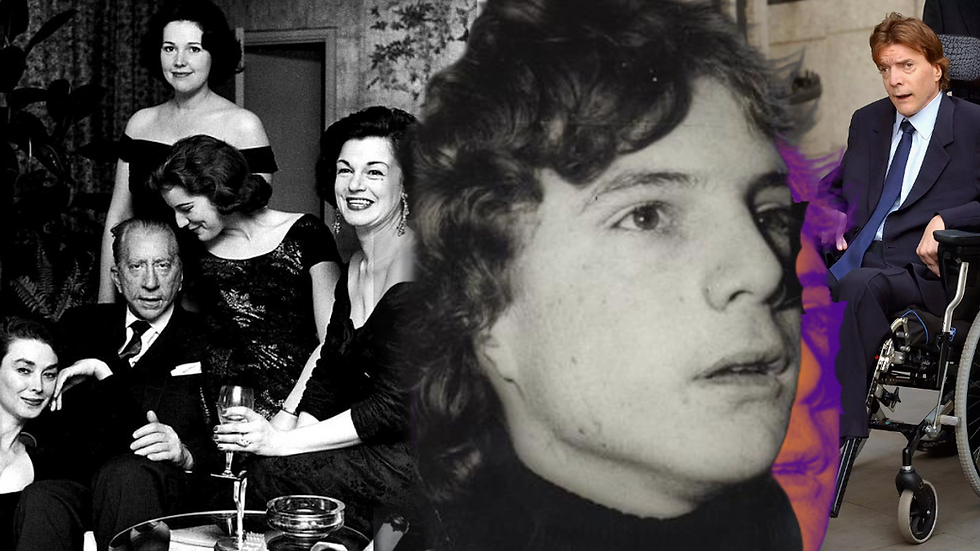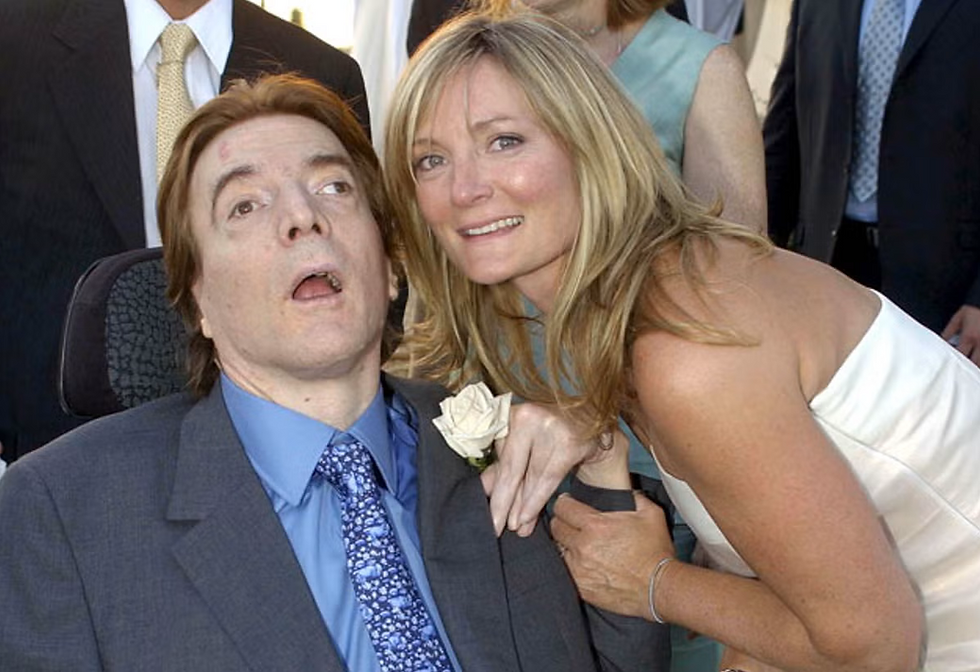The Kidnapping And Tragic Later Life Of John Paul Getty III

Kidnapping at Piazza Farnese
In the bustling, bohemian centre of Piazza Farnese in Rome, where expatriates, artists, and socialites mingled, 16-year-old John Paul Getty III was a familiar face. Known for his rebellious spirit and carefree lifestyle, Paul had carved out a niche for himself in the city’s underground scene. On 10 July 1973, his life took a sudden turn. At around 3 AM, Paul was abducted by members of the ‘Ndrangheta. This crime syndicate, known for kidnapping for ransom, had set their sights on a particularly lucrative target—Paul was an heir to the Getty oil fortune, one of the most substantial in the world.
The Getty Wealth—and the Curse of Its Legacy
The story of the Getty family fortune begins with J. Paul Getty, the family patriarch and one of the wealthiest men of his time. He amassed a vast fortune through the Getty Oil Company, a business empire he built in the 1950s. Known for his frugality as much as his wealth, J. Paul Getty famously lived in a mansion in Surrey, UK, where he installed a payphone to avoid paying for guests’ calls. A committed Anglophile, Getty spent most of his later years in the United Kingdom, effectively distancing himself from his American family.
John Paul Getty Jr., Paul’s father, also inherited a love for the British Isles, though his temperament diverged sharply from his father’s. Known for his philanthropy and less rigid ways, Getty Jr. spent time working for Getty Oil Italiana in Rome, which provided a base for young Paul’s upbringing. However, Getty Jr. and Paul’s mother, Gail Harris, divorced when Paul was just a child, leaving Gail with primary responsibility for raising their son.

A Troubled Youth in Rome
Growing up amidst the glamour and indulgence of Rome’s social circles, Paul was a character as unpredictable as he was charismatic. Raised largely without the direct oversight of his father, Paul adopted a bohemian lifestyle. He was expelled from several prestigious schools, once after staging a stunt inspired by the Manson Family murders, painting hallways and unnerving school authorities. His wild antics didn’t stop there—by age 15, he was frequently seen at nightclubs, associating with left-wing activists, and engaging in reckless behaviour, including selling art and jewellery to fund his lifestyle.
During one protest, he even threw a Molotov cocktail and was arrested, earning him a reputation among his friends and family as something of a loose cannon. His behaviour, though alarming, was typical of the rebellious youth of the time. However, it was this lifestyle that ultimately made him vulnerable, leading him directly into the hands of his captors.

A Ransom Demand Met with Indifference
Shortly after Paul’s disappearance, Gail Harris, his mother, received a chilling call from his captors, demanding $17 million for his release. She was a single mother who had long been divorced from Getty Jr. and had no means of accessing such an enormous sum. When she explained this to the captors, they reportedly instructed, “Get it from London,” implying that she should turn to Paul’s grandfather for the funds.
Paul’s father, who had also struggled to keep up with his son’s wayward behaviour, tried reaching out to his own father, J. Paul Getty Sr. However, the response from the oil magnate was as dismissive as it was shocking:
“I have 14 other grandchildren, and if I pay one penny now, then I will have 14 kidnapped grandchildren.”
Getty Sr. was unmoved by the pleas, insisting that paying the ransom would encourage further abductions.
Adding to the surreal nature of the event, there were whispers within the family and even among police that the young Getty may have orchestrated his own kidnapping, in part to access his grandfather’s wealth. Given Paul’s history of attention-seeking stunts, some family members were hesitant to take the abduction seriously. However, as weeks turned into months, it became evident that this was no prank.

Brutal Treatment in Captivity
Paul’s ordeal was as brutal as it was prolonged. The ‘Ndrangheta, known for their ruthlessness, kept him chained in a remote cave in the Calabrian mountains. Here, he endured regular beatings and torture. The conditions were deplorable, and Paul’s captors had no qualms about letting him suffer to add pressure on his family.
Months passed with no response from his grandfather, and the captors grew increasingly impatient. In a final act to escalate the situation, they severed Paul’s ear in November and mailed it, along with a lock of his hair, to an Italian newspaper. The accompanying note made their ultimatum clear: “This is Paul’s ear. If we don’t get some money within 10 days, the other ear will arrive. In other words, he will arrive in little pieces.” This shocking act finally jolted J. Paul Getty Sr. into action.
The Ransom is Paid—but With Conditions
At last, Getty Sr. relented and agreed to pay the ransom. However, the notorious penny-pincher struck a bargain with the kidnappers, reducing the payment from $17 million to $2.9 million. Even then, he only provided this amount on loan to his son, J. Paul Getty Jr., insisting that he pay it back with a 4% interest rate. Despite the money finally being secured, Paul’s freedom came at a painful cost—both financially and emotionally.
On 15 December 1973, Paul was finally freed, found abandoned on a cold roadside near Rome, just days after his 17th birthday. His ear was permanently mutilated, a stark reminder of the horrors he had endured. His ordeal was over, but the trauma lingered.

Psychological Toll and the Struggle for a Normal Life
While his physical injuries slowly healed, Paul’s mental scars were far deeper and more enduring. The kidnapping left him psychologically shattered, and he soon sought solace in drugs and alcohol. Friends and family noted how the experience seemed to drain his vitality, leading to destructive coping mechanisms. By 1981, his dependence on these substances culminated in a catastrophic event—after consuming a combination of Valium, methadone, and alcohol, Paul suffered liver failure and a stroke, leaving him a quadriplegic and partially blind at just 25 years old.
His godfather, Bill Newsom, poignantly recalled the lasting impact of Paul’s trauma, saying,
“Everything was gone. Everything except his mind.”
The Getty wealth provided for his medical needs, transforming his Beverly Hills home into a private medical facility. But no amount of money could restore his former self.
The Legal Fallout and the Public’s Fascination
In the years that followed Paul’s release, Italian authorities pursued those responsible for the kidnapping. Nine individuals were arrested, among them several high-ranking members of the ‘Ndrangheta. However, due to the influence and resources of the crime syndicate, only two of the kidnappers were convicted, while the rest escaped justice.
This high-profile case brought global attention not only to the Getty family but also to the brutal realities of organised crime in Italy. For the public, the kidnapping became emblematic of the darker side of wealth and privilege. Paul’s story, tragic and complex, highlighted the strains and conflicts within one of the world’s richest families.
Paul’s Legacy and Final Years
John Paul Getty III passed away in 2011 at age 54, leaving behind a legacy tainted by the violence and trauma of his youth. His life, shaped by both unimaginable wealth and profound suffering, became a cautionary tale—a stark reminder that privilege does not shield one from pain. His kidnapping exposed the divisions and dysfunction within the Getty family, shedding light on the chilling reality of how money can complicate and fracture relationships.